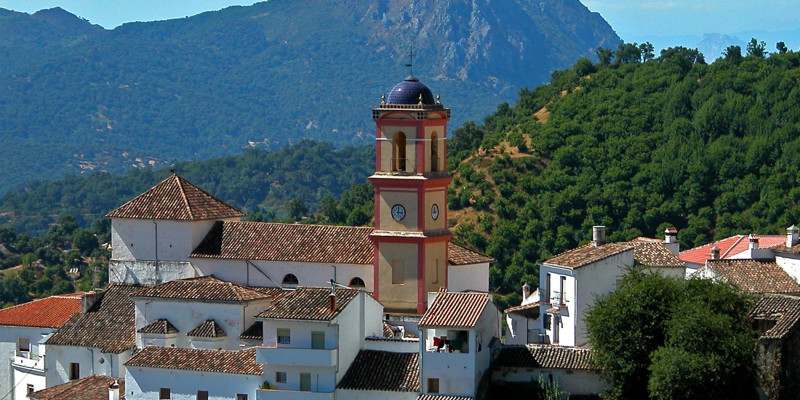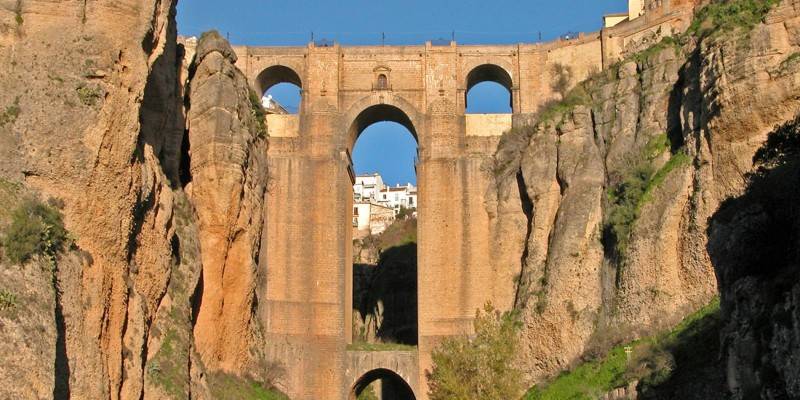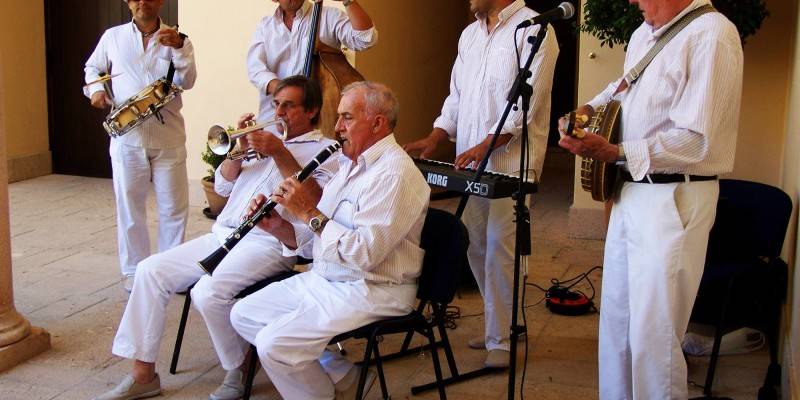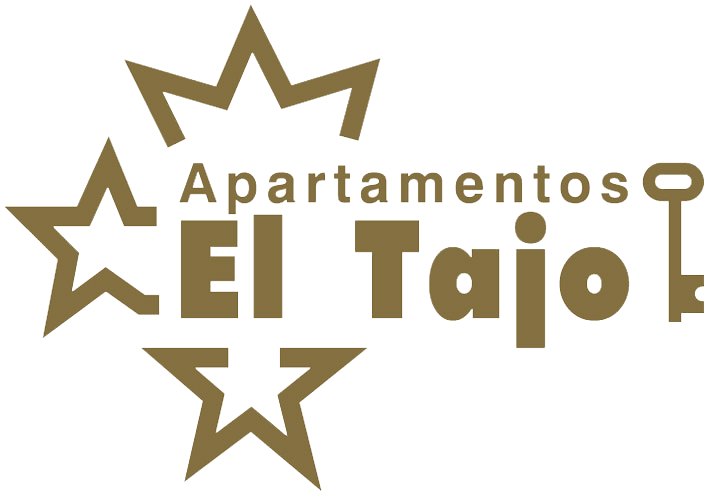Ronda
Ronda (Spanish pronunciation: [ˈronda]) is a city in the Spanish province of Málaga. It is located about 100 km (62 mi) west of the city of Málaga, within the autonomous community of Andalusia. Its population is about 35,000 inhabitants.
It now is one of the towns and villages that is included in the Sierra de las Nieves National Park.
Ronda is situated in a mountainous area about 750 m (2,460 ft) above mean sea level. The Guadalevín River runs through the city, dividing it in two and carving out the steep, 100-plus-meter-deep El Tajo canyon above which the city perches. The Spanish fir (Abies pinsapo) is endemic to the mountains surrounding Ronda.

Main sights
Three bridges, Puente Romano ("Roman Bridge", also known as the Puente San Miguel), Puente Viejo ("Old Bridge", also known as the Puente Árabe or "Arab Bridge"), and Puente Nuevo ("New Bridge"), span the canyon. The term nuevo is something of a misnomer, as the building of this bridge commenced in 1751 and took until 1793 to complete. The Puente Nuevo is the tallest of the bridges, towering 120 m (390 ft) above the canyon floor, and all three serve as some of the city's most impressive features. The former town hall, which stands next to the Puente Nuevo, is the site of a parador and has a view of the Tajo canyon.
Outside the Ronda Bullring
The 'Corrida Goyesca' is a unique and historical bullfight that takes place once a year in Ronda in the Plaza de toros de Ronda, the oldest bullfighting ring in Spain. It was built in 1784 in the Neoclassical style by the architect José Martin de Aldehuela, who also designed the Puente Nuevo.
The partially intact Baños árabes ("Arab baths") are found below the city and date back to the 13th and 14th centuries.
Plaza del Socorro
Plaza del Socorro is the modern political centre of Ronda. It was here that Blas Infante showed the Andalusian flag and coat of arms for the first time in 1918. The parish church of Socorro (Parroquia de Nuestra Señora del Socorro) was only built in 1956. The building known as the Casino and Circulo de Artistas (Artists' Society) is located on the north side of Ronda's Plaza del Socorro.
Palacio of the Marqués de Salvatierra
The Palacio of the Marqués de Salvatierra opens irregularly as a small museum of Renaissance art and artefacts. The Palacio is an 18th-century renovation of an earlier 16th century building gifted to the family of Don Vasco Martín de Salvatierra by the Catholic Monarchs when they redistributed the spoils of the Reconquest. In 1994, Madonna obtained permit to shoot inside the palace of the Marquis of Salvatierra for the music video of Take a Bow.
Casa del Rey Moro
Despite the name, The Casa del Rey Moro was never the home of a Moorish king. It was built in the 18th century, when Moorish Spain was already a distant memory. Its apparently Moorish gardens are even more recent, having been designed by the French landscape gardener Jean Claude Forestier in 1912. The house does incorporate one genuine and important relic of Ronda's Moorish era: the so-called Water Mine, a set of steps down to the river carved into the cliff wall.

Cultural influence
American artists Ernest Hemingway and Orson Welles spent many summers in Ronda as part-time residents of Ronda's old-town quarter called La Ciudad. Both wrote about Ronda's beauty and famous bullfighting traditions. Their collective accounts have contributed to Ronda's popularity over time.
In the first decades of the 20th century, the famous German poet Rainer Maria Rilke spent extended periods in Ronda, where he kept a permanent room at the Hotel Reina Victoria (built in 1906); his room remains to this day as he left it, a minimuseum of Rilkeana. According to the hotel's publicity, Rilke wrote (though probably not in Spanish) He buscado por todas partes la ciudad soñada, y al fin la he encontrado en Ronda and No hay nada más inesperado en España que esta ciudad salvaje y montañera ("I have sought everywhere the city of my dreams, and I have finally found it in Ronda" and "Nothing is more startling in Spain than this wild and mountainous city.")
Hemingway's novel For Whom the Bell Tolls describes the execution of Nationalist sympathizers early in the Spanish Civil War. The Republicans murder the Nationalists by throwing them from cliffs in an Andalusian village, and Hemingway allegedly based the account on killings that took place in Ronda at the cliffs of El Tajo.
Orson Welles said he was inspired by his frequent trips to Spain and Ronda (e.g. his unfinished film about Don Quixote). After he died in 1985, his ashes were buried in a well on the rural property of his friend, retired bullfighter Antonio Ordoñez.
English writer George Eliot's book Daniel Deronda ("Daniel of Ronda") tells the story of a Spanish Jew brought up as an Englishman. Some speculation existed that Eliot's ancestors had lived in Ronda prior to the expulsion of the Jews from Spain in 1492.
In the fashion world, Italian designer Giorgio Armani specially designed the bullfighting costume called ‘Goyesco’ for famed bullfighter Cayetano Rivera Ordóñez on the occasion of the Corrida Goyesca that took place on September 6, 2009, in Ronda. Cayetano's suit of lights was in the Goyaesque style, comprising a jacket, trousers, and cloak in techno-satin. The three pieces were embroidered with sequins, small glitter stones, and thread, all matching the colour of the background fabric.[4][8]
Ronda was used as the setting for the flower market in the 2017 animated movie Ferdinand.

Transportation
Ronda is accessible via highways (Autovía A-374) and by rail from Algeciras and from Córdoba. A direct train from Madrid to Ronda operates twice daily.
The single-track railway between Ronda and Algeciras was built between 1890 and 1892 by the Algeciras Gibraltar Railway Company. It enabled the British military officers to escape the summer heat of Gibraltar. The railway was built by James Morrison, an engineer, in partnership with Alexander Henderson, 1st Baron Faringdon, a financier. The station at Ronda was opened in 1892.
(text from https://en.wikipedia.org/wiki/Ronda)

